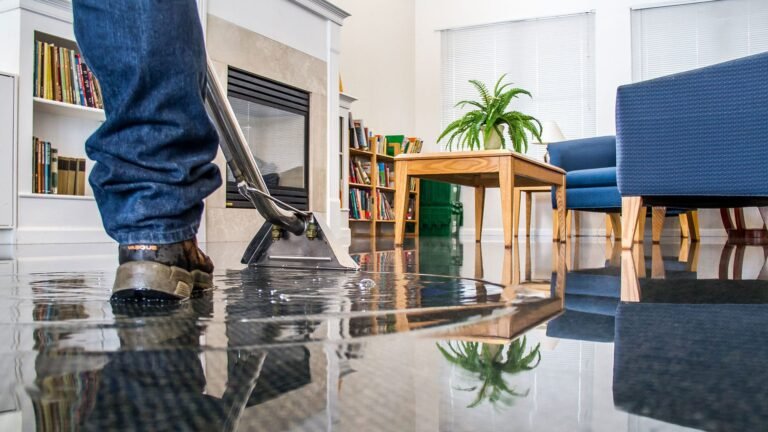When water damage strikes a home or business, the journey from chaos to comfort is rarely a straight path. A single leak can trigger a cascade of complications—mold growth, structural weakening, or property devaluation. What matters most in those moments is not just stopping the damage, but restoring the space fully and safely. A true restoration process focuses on bringing peace of mind alongside physical repair. We will explore how a comprehensive restoration approach transforms disrupted spaces into functional, livable environments. Using a streamlined, client-focused system, some companies have redefined how water damage recovery should be handled, from detection to final polish.
A Coordinated Approach to Emergency Response
The first and most crucial step after any water-related incident is immediate intervention. Many homeowners and property managers make the mistake of underestimating the speed and scale at which water can spread. Within hours, porous materials like drywall and flooring begin to absorb moisture, encouraging microbial growth and weakening structures. A full-service company like Sarkinen Restoration in Portland responds not just quickly, but strategically. Their goal isn’t to merely mop up visible water—it’s to understand the full extent of the intrusion and stop further degradation in its tracks. This often includes thermal imaging, moisture readings, and thorough inspections to assess the extent of the water penetration. At this stage, effective communication is essential.
Property owners are often overwhelmed, and having a clear explanation of the situation and proposed next steps can reduce panic. Every minute counts, and a coordinated response ensures nothing is left to chance. It’s not about showing up—it’s about showing up prepared and informed.
From Extraction to Drying: Managing the Hidden Threats
Once the situation is under control, the next phase involves removing excess water and preventing hidden problems. While visible water can be extracted using pumps and vacuums, it’s the lingering moisture in walls, subfloors, and ceilings that poses a long-term threat. Mold can begin forming in as little as 24–48 hours if the drying process is not handled meticulously. A robust restoration service uses industrial-grade dehumidifiers and air movers designed to accelerate evaporation and maintain controlled air conditions.
Moisture mapping continues throughout this stage to track progress and detect any stubborn wet zones. What sets a professional-grade restoration process apart is the commitment to thoroughness. This is not a place for shortcuts—rushing the drying phase or ignoring small damp pockets can lead to reinfestation, warped materials, or future air quality concerns. Ensuring everything is fully dry is as critical as stopping the original leak, and the process is treated with the same care and urgency.
Damage Assessment and Transparent Planning
After the environment is stabilized, the process turns toward assessment and planning. Water damage can affect more than the eye can see—plumbing systems, electrical wiring, insulation, and even foundational materials may require repair or replacement. At this stage, the service team creates a clear and documented scope of work. This involves cataloging damaged items, outlining structural repairs, and offering recommendations on whether components should be restored or replaced. Transparent communication is a cornerstone of this phase.
Property owners are often concerned about cost, timelines, and whether their space will return to its original state. A strong process respects those concerns, breaking down every phase into understandable parts and offering fair, accurate estimates. What distinguishes a comprehensive service is not just the technical ability to fix a building—it’s the willingness to educate and involve the client in the process. That sense of partnership makes the long road to recovery feel much shorter and more manageable.
Rebuilding More Than Walls: Structural and Aesthetic Restoration
Once the damage is mapped out and approved, the actual rebuilding begins. This part of the process requires not just technical precision, but also a deep understanding of what makes a space feel like home or function as a business. Replacing drywall, refinishing flooring, repairing ceilings, or even reconstructing entire sections must be done with care, especially if the materials are unique or the layout complex. More than simply returning the property to its pre-loss state, this phase often becomes an opportunity to improve on what was there before. Better insulation, modern materials, and updated finishes can add lasting value to the property. Sarkinen Restoration, for example, focuses on delivering a seamless experience from cleanup to completion, allowing clients to transition directly from disaster to upgraded livability. It’s not just about rebuilding walls—it’s about restoring confidence. In many ways, this is the most rewarding phase because it signals a return to normalcy.
A leak can seem like a small issue until it turns into a full-blown crisis, disrupting routines and threatening property value. But the right restoration process—thorough, communicative, and hands-on—can turn those moments of crisis into opportunities for renewal. We have explored how every phase, from emergency response to final inspection, contributes to a full-circle return to livability. By focusing on detail, transparency, and respect for both structure and occupant, companies like Sarkinen Restoration show that recovery is not just possible—it can be transformative. The path from leak to livability is not just about fixing damage; it’s about reclaiming comfort, safety, and confidence.

